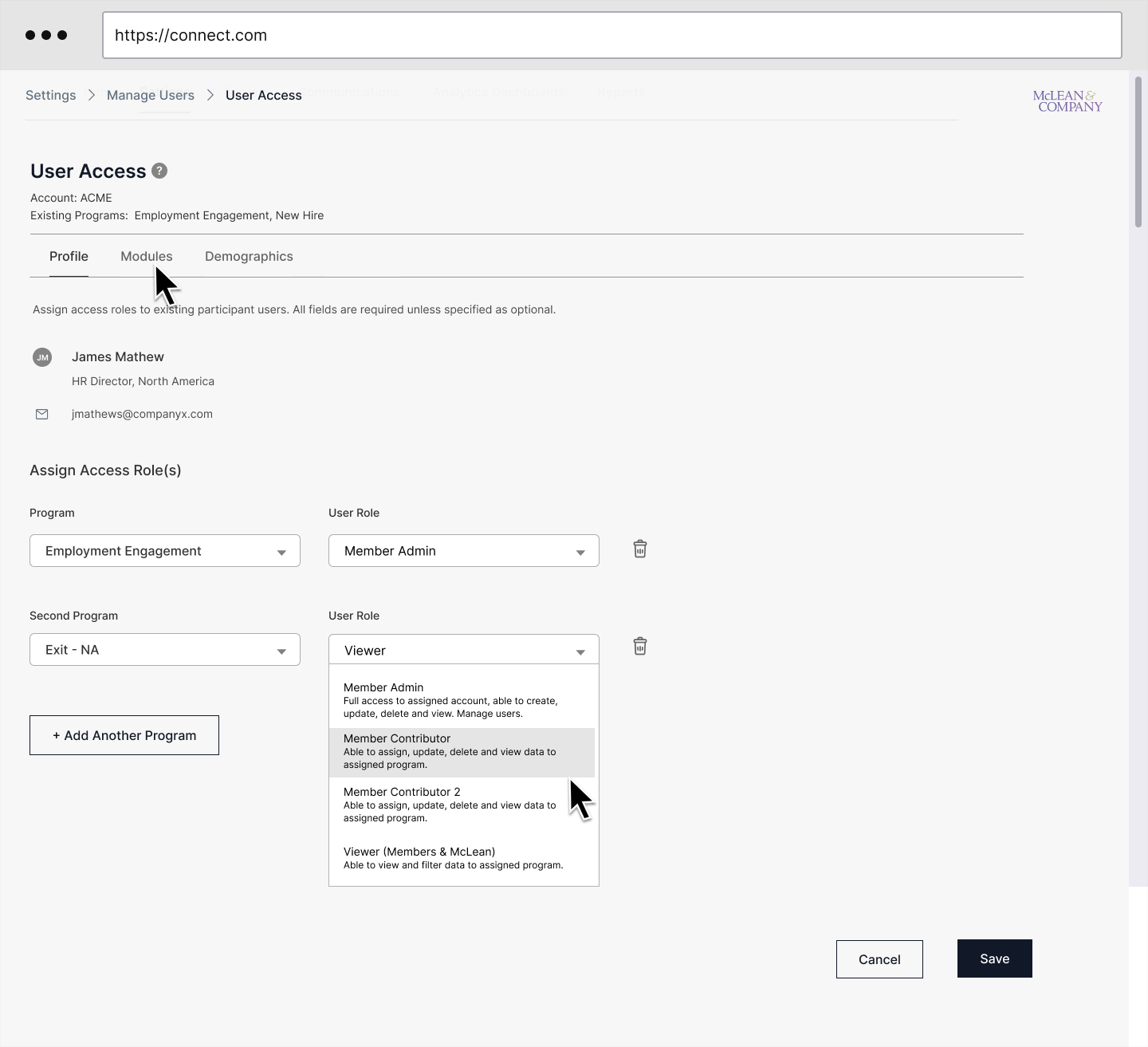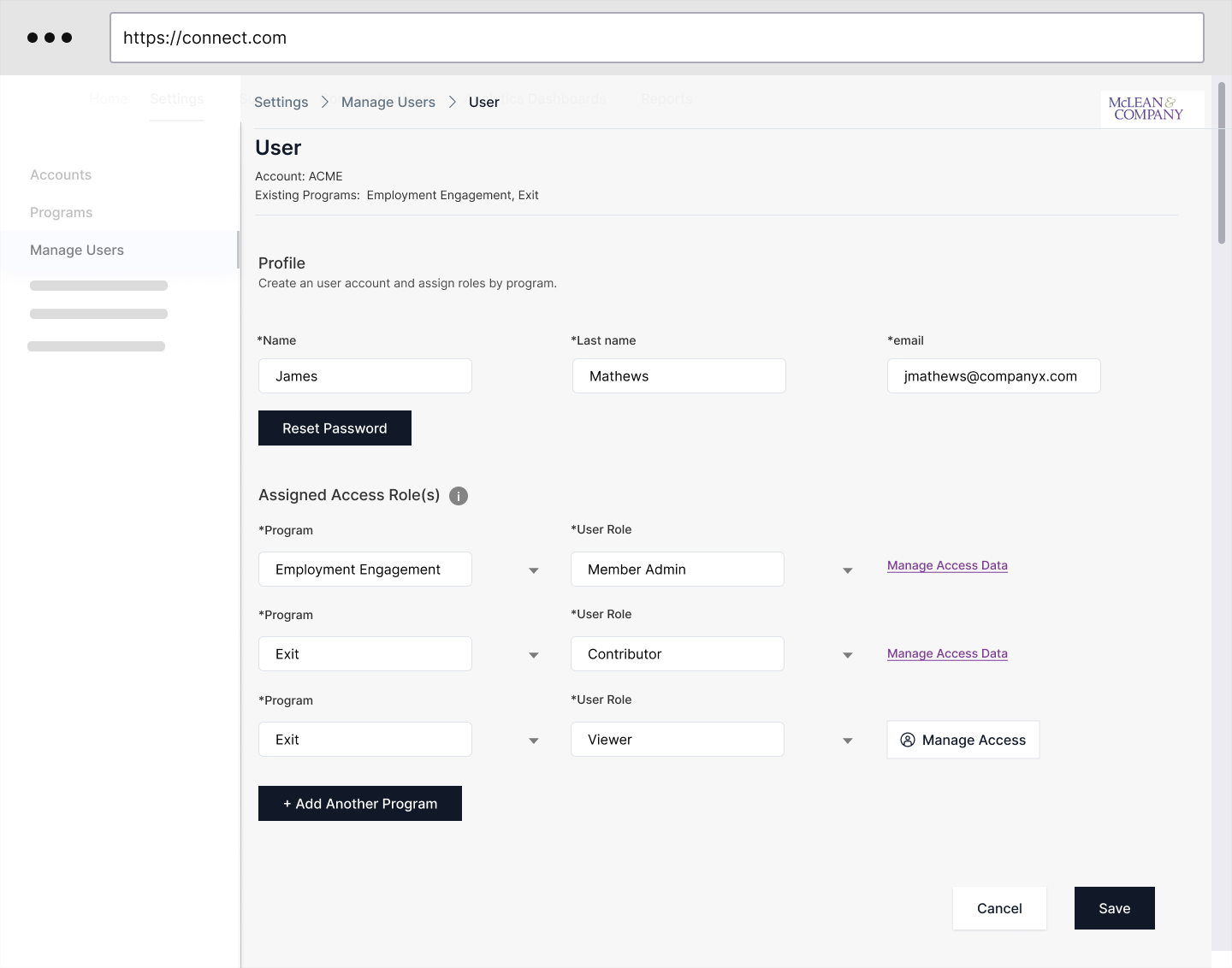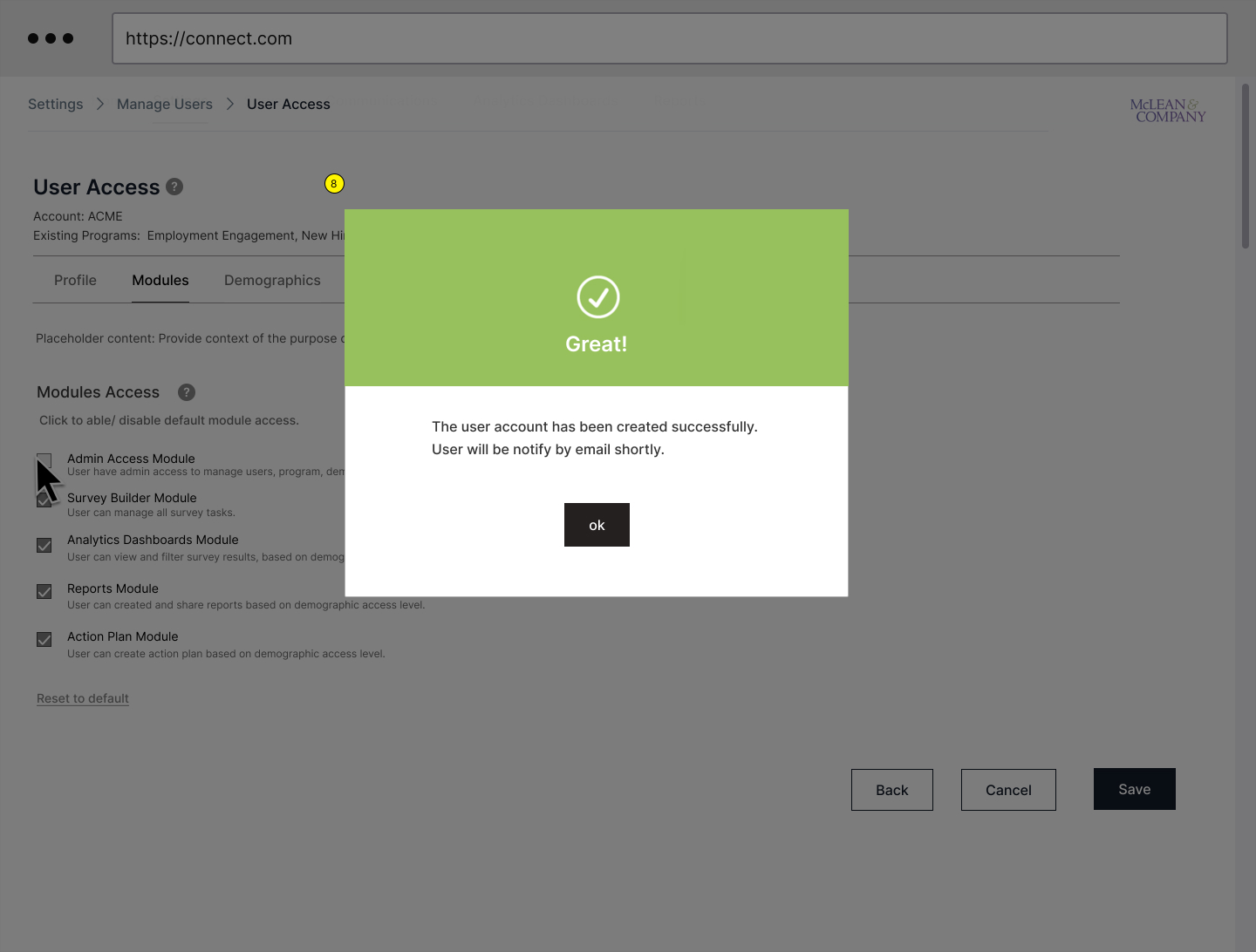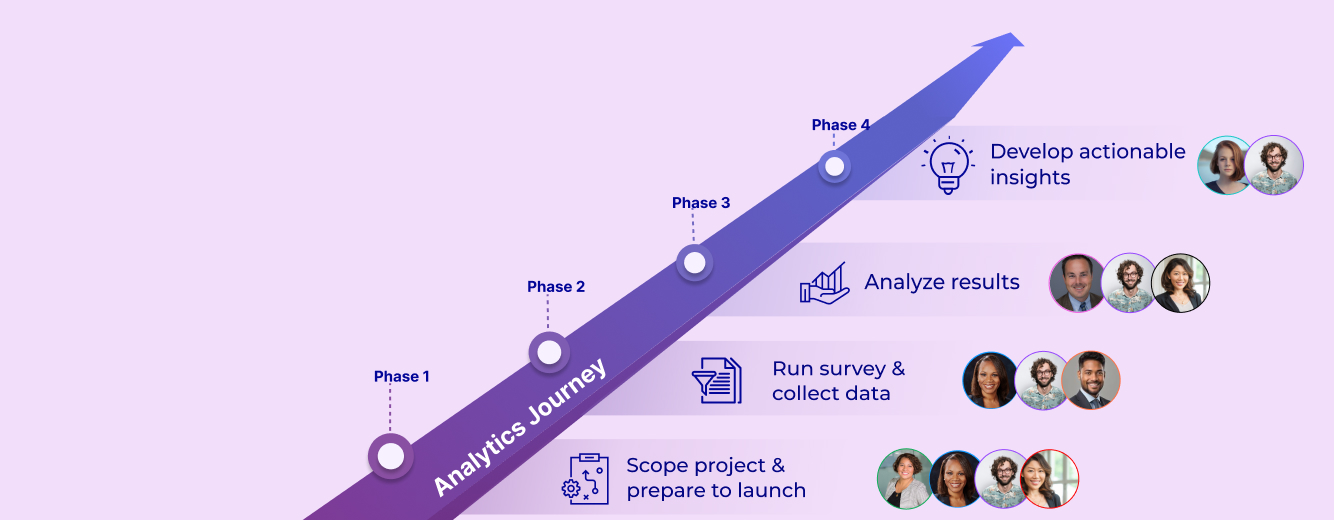
Streamline
user roles & permissions
for diagnostic app.
SUMMARY
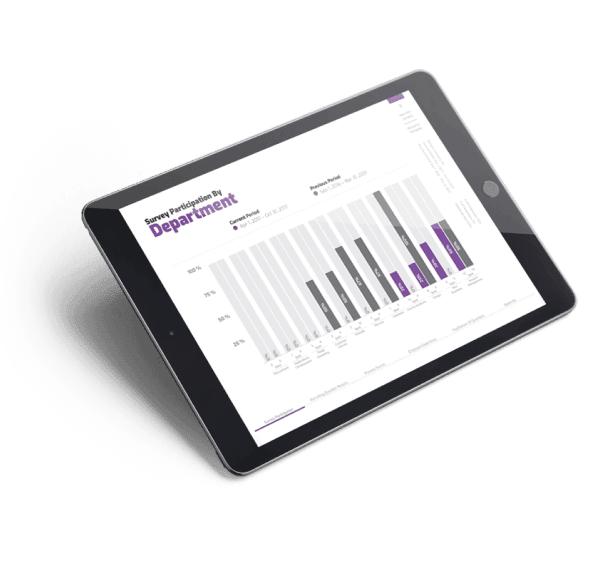
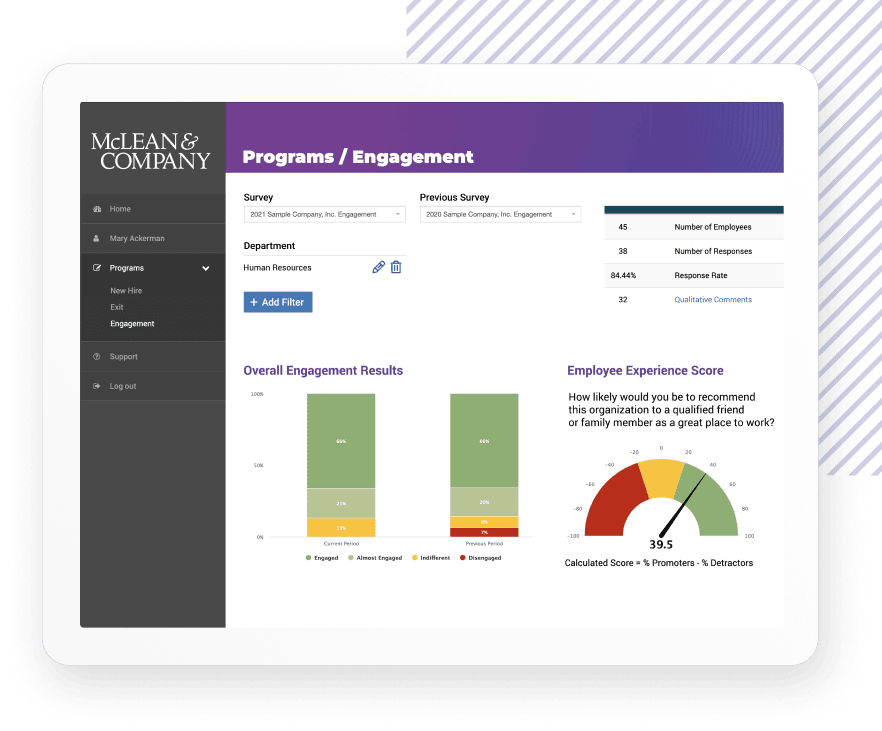
Primary end user
Project Coordinator (staff)
Secondary end user
HR professional & C-Suit (client)
Business Opportunities
MCO is an HR consulting and advisory firm that offers diagnostic tools and consulting services. MCO aims to improve operational efficiency. To achieve this, the company identified several focus areas:
- Streamlining the diagnostics process to reduce project management time for staff and clients.
- Enhancing the user experience across every stage of the client journey
What is Connect?
Connect is a smart survey platform that helps organizations run surveys and gather employee feedback easily. It turns raw data into actionable insights, making it easier for HR professionals to spot areas for improvement and boost workforce engagement.
The PROBLEM
Fragmentation, inefficiencies,
& client constraints
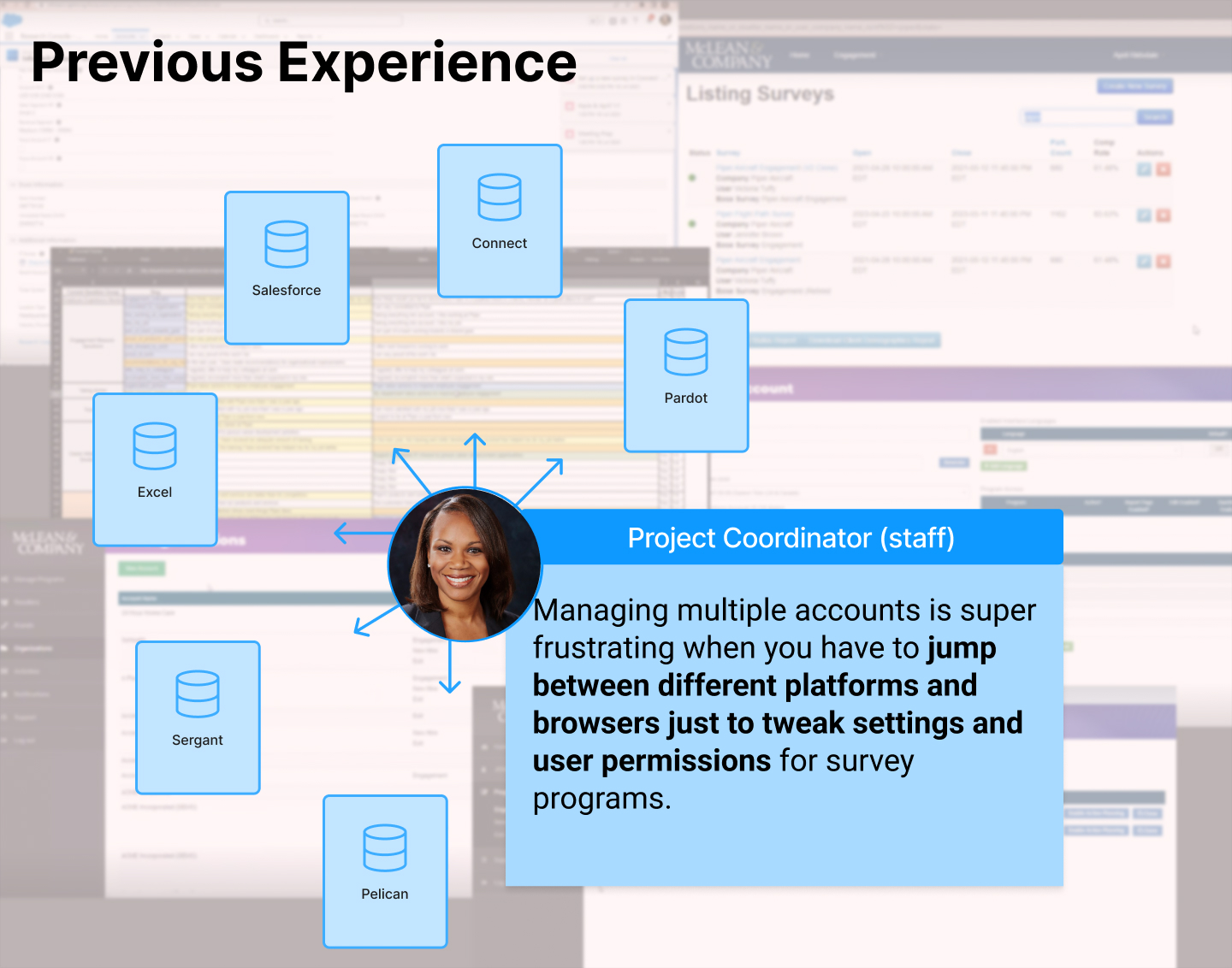

The problem
Connect (SaaS) encountered significant challenges, including:
- Fragmented interface
Permissions and roles were managed across multiple locations, increasing the likelihood of human error and inefficiency for staff. - Overreliance on coordinators
Clients and peers relied heavily on project coordinators (staff) due to limited self-service permissions, leading to time management inefficiencies. - Limited role permissions
The system lacked dynamic options for restricting access to features or accounts. - Impersonation issues
Coordinators often had to impersonate users, raising compliance and data privacy concerns. - Lack of visibility and autonomy
Clients couldn’t collaborate or share responsibilities due to the inflexible system, limiting their control over their survey data.
Process
Timeline
Aligning Vision for a User-Focused Transformation
My role
Lead UX Designer
Team
Product Manager, Stakeholders, Lead Developer, Architect, UX & UI Design team.
Research & Discovery →
- Review existing research and find gaps.
- Journey Map and demos.
- Architecture audit.
- Interface accessibility evaluation.
- Hotjar recording analisys.
Defining & Integration →
- Double diamond and product strategy alignment.
- OKRs benchmark.
- Back-end integrated architecture.
- Roles & permissions matrix.
Prototype &
Test →
- Flow diagraming & user story documentation.
- Wireframing
- Testing
Implement & Handoff →
- Feedback adjustment.
- Handoff to the design team.
- Report presentation for stakeholder engagement.
We kicked things off by hosting product vision workshops to align with stakeholders and ensure their support for a clear and actionable roadmap for MVP 1.
Key goals
Redesign roles & permissions system to reduce project management time.
We aimed to consolidate…
the fragmented system to reduce project management time and boost efficiency for both staff and clients.
Empower clients & coordinators with more control.
To enhance overall effectiveness, we wanted…
to give clients and coordinators more flexibility and control over access to features and accounts.
Strengthen data privacy controls for improved compliance.
We focused on tightening up the data integration…
with all CMRs to avoid Coordinators having to impersonate users and end with compliance and accountability concerns.
Key users

Carla, manages multiple Diagnostics…
accounts and clients. She wants to spend more time guiding team members through their survey processes instead of getting bogged down by tedious manual tasks. Her focus is on enhancing the user experience and streamlining workflows.

Mike, who doesn’t have an analytics background…
needs a straightforward way to administer surveys and review results within three months. He wants to easily grant access to others for management purposes. This approach will help him take charge of their survey program and strengthen stakeholder relationships with measurable ROI.
RESEARCH
& Discovery
Finding Gaps, Bridging People & Processes

Previous research identified 13 users across the four phases.
MVP1 focused on phases 1 and 2, with
Project Coordinators (staff) as the
primary users and C-suite (client)
as secondary users.
We analyzed previous research to identify gaps in two key user data. Conducted further research to fully understand key touchpoints and tasks, and outlined the main pain points in phases 1 and 2.

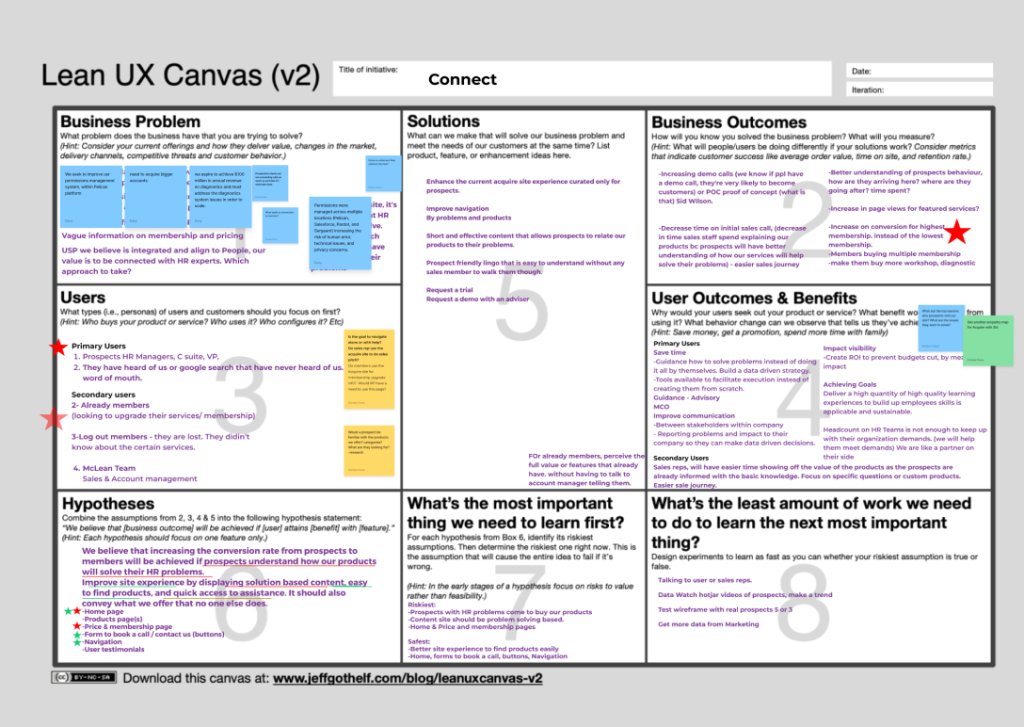

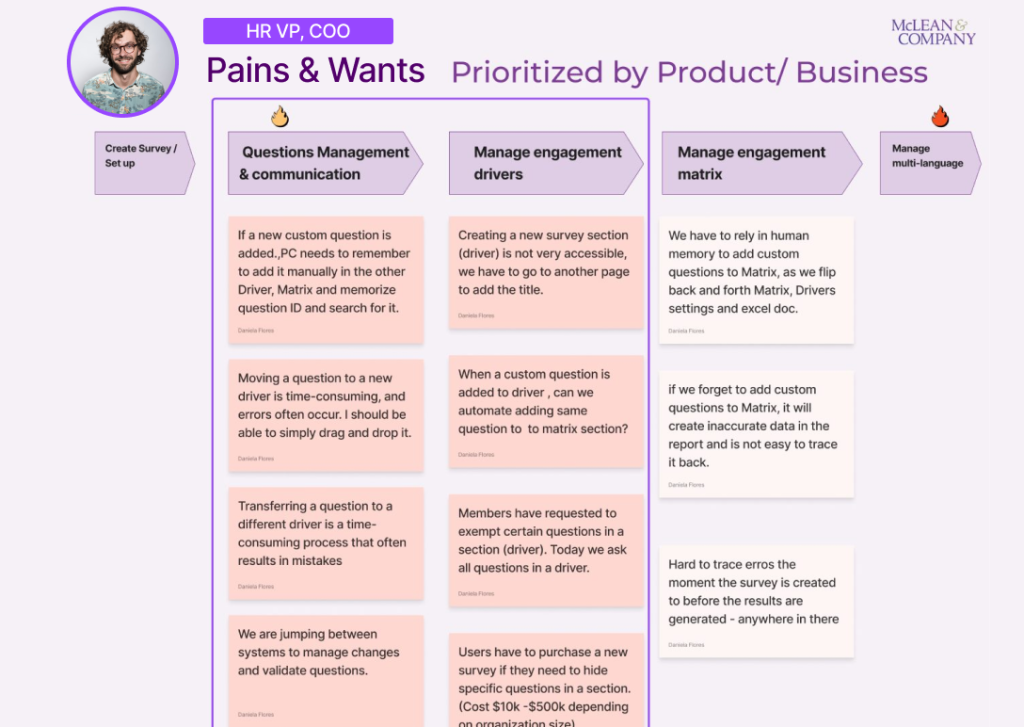
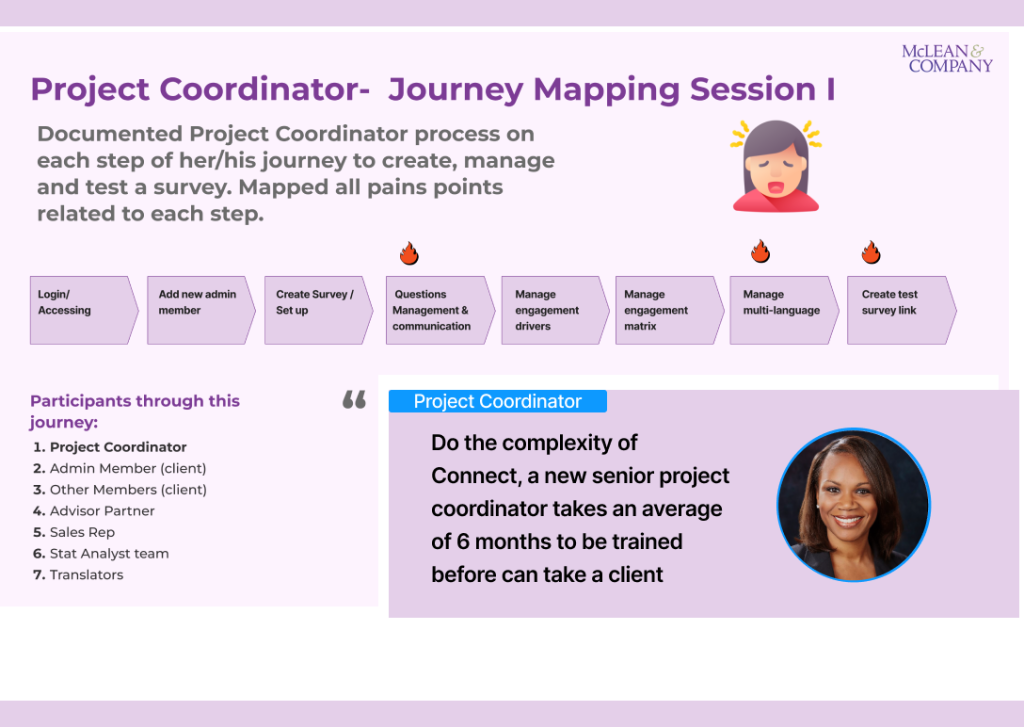
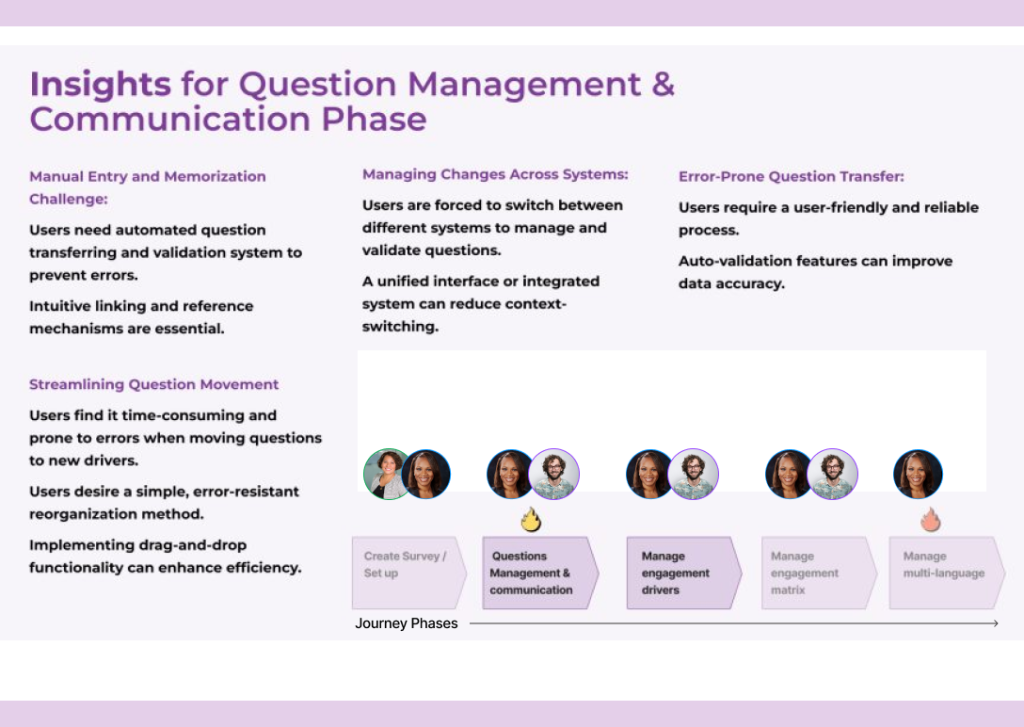
DEFINING
& INTEGRATING
Crafting a Clean and Intuitive Permissions Back-End System
I facilitated collaboration with the architect, lead engineer, and project manager to audit and ideate the architecture of Connect’s permissions modules, ensuring seamless integration with other CRMs.
We dove deep into auditing current interface accessibility, applying heuristic evaluations, analyzing Hotjar recordings, and exploring the competitive landscape.
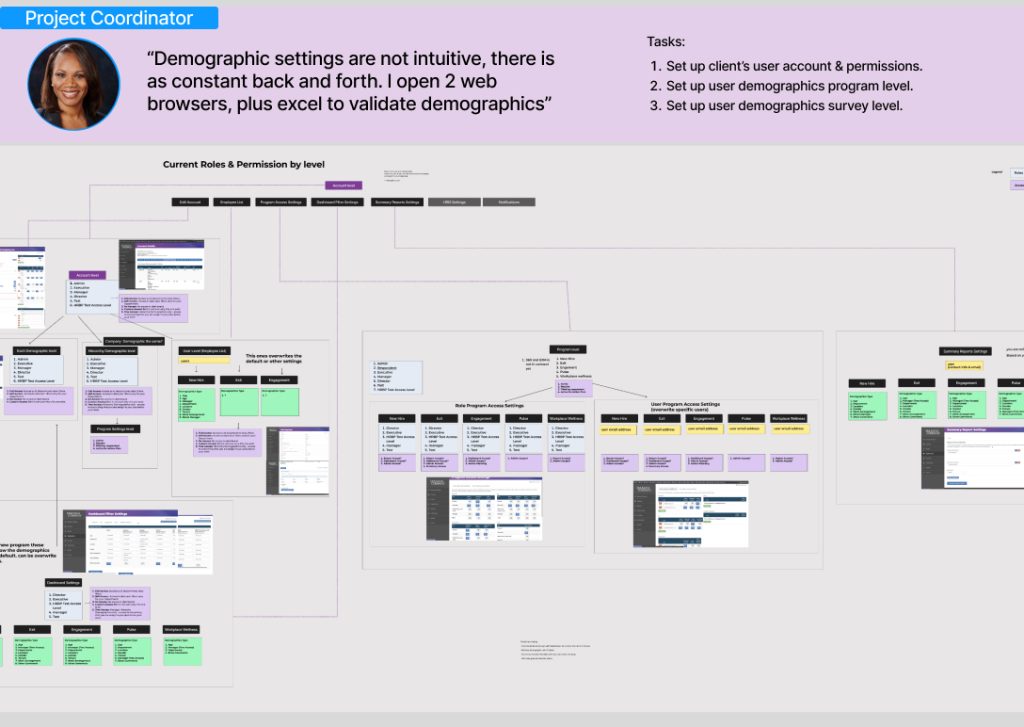

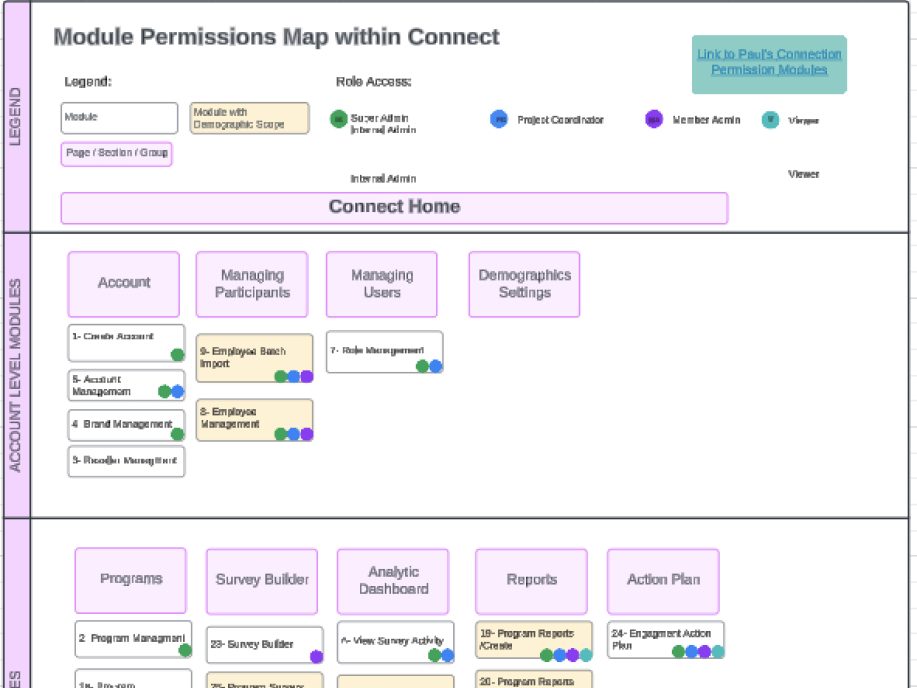
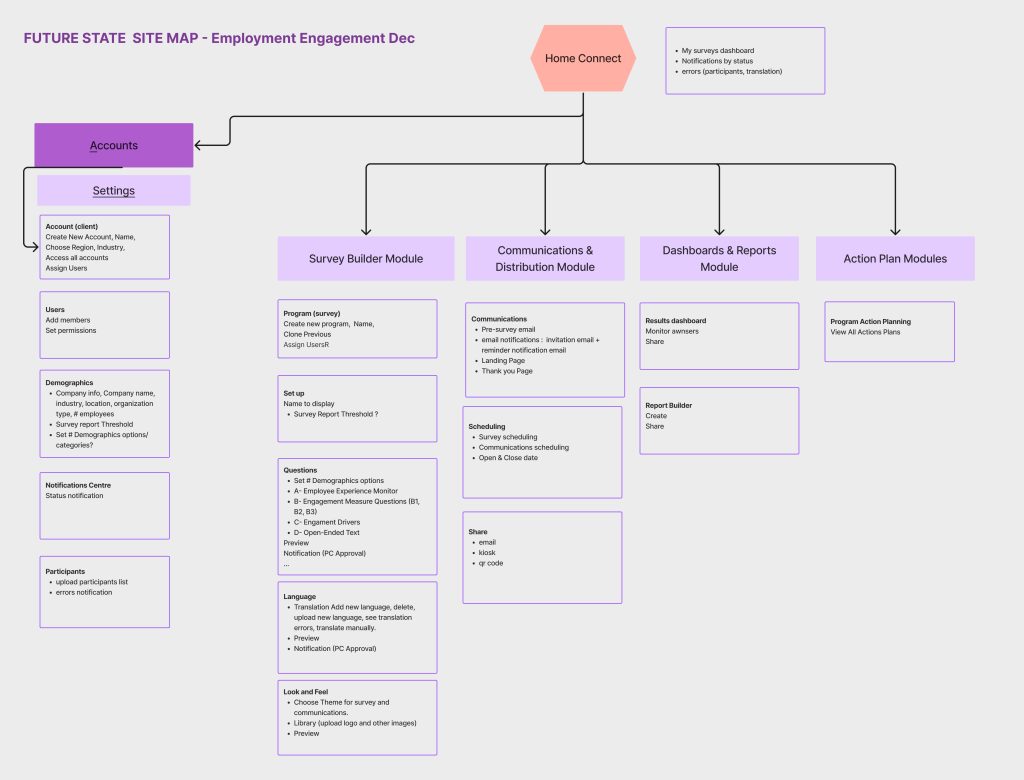
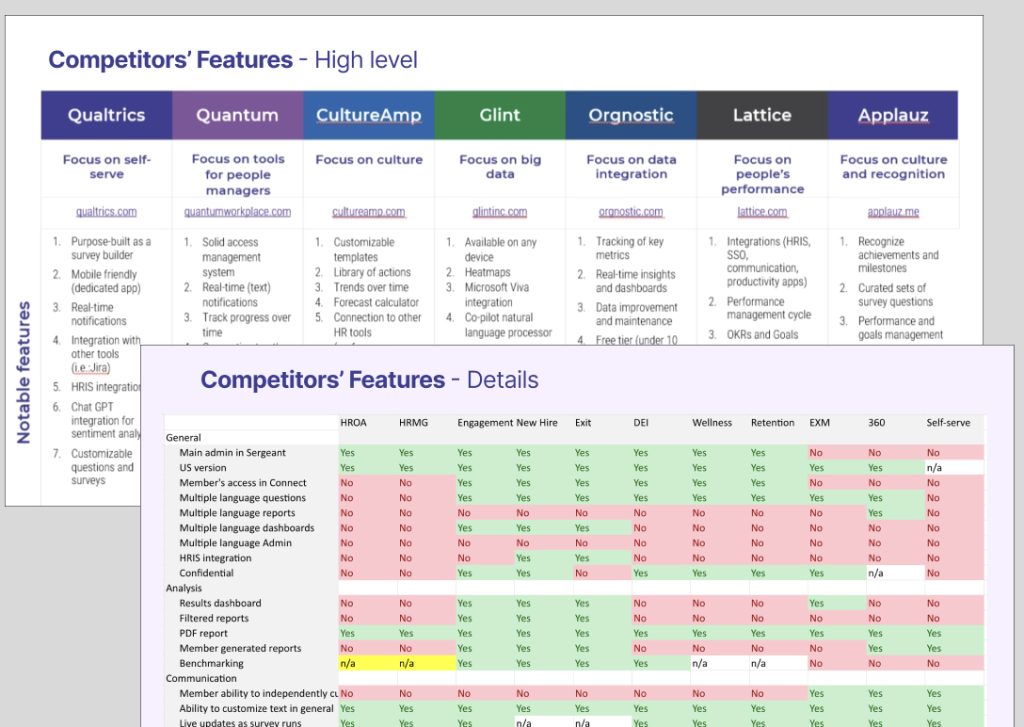
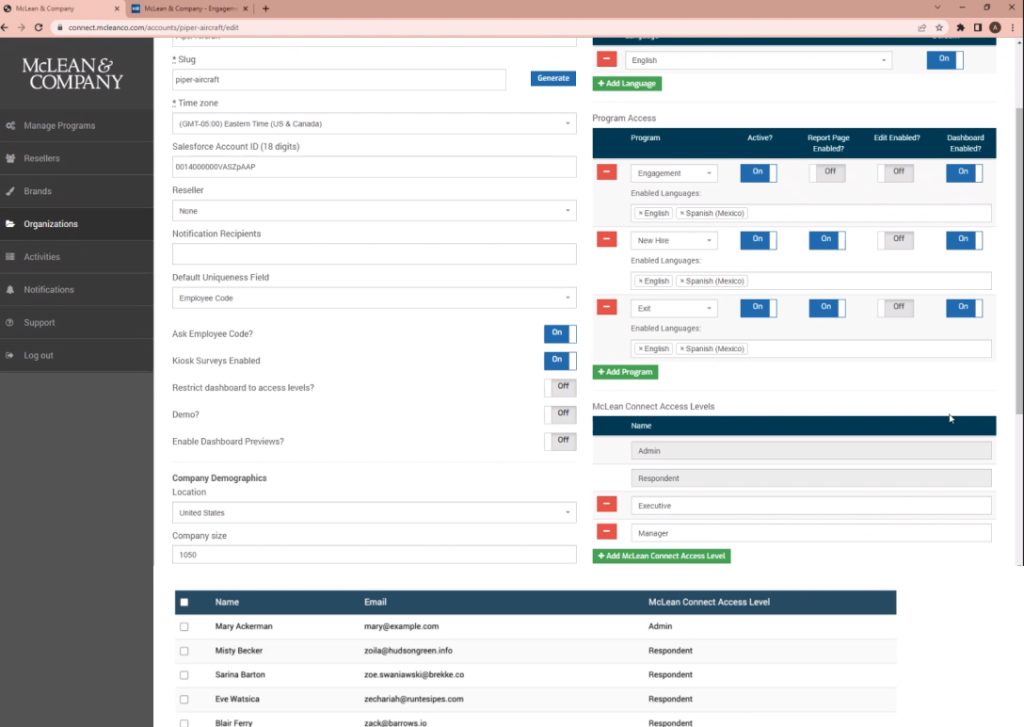

PCs faced a real challenge managing roles, permissions, survey modules, and demographics. Each element was scattered across different sections of the user interface, and with one client account hosting up to 10 different survey types, it’s no wonder that new PCs often took at least 6 months just to remember where everything was located!
BACK-END
Outcome
New Self-Serve Roles & Permission System Aligned with User Needs
We’ve developed a streamlined role-based access control (RBAC) system that integrates all modules, offering users a clean and logical architecture that aligns with their mental models. This new system delivers two key artifacts:

Self-Serve Roles and Permission Matrix (RBAC): A comprehensive overview detailing access levels across all modules for the same group of users.
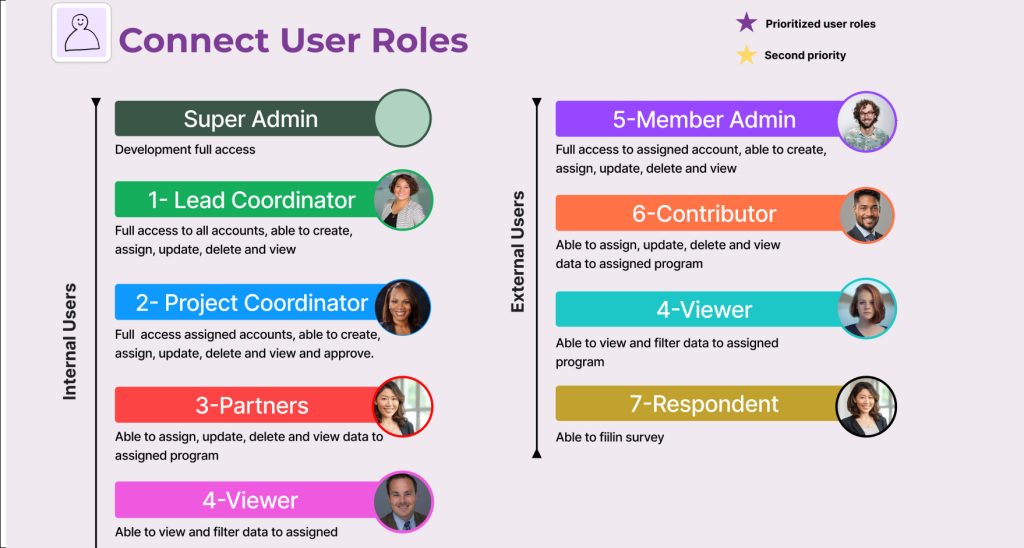
User Roles Artifact: A defined permissions system for staff and clients featuring seven distinct roles tailored for our 13 users.
Key Users Outcomes

User role:
2- Project Manager
Internal user (staff)
- Create various roles for clients and their teams.
- Access a centralized location to manage roles and permissions for clients.
- Save time by assigning administrative tasks to clients and their teams.
- Eliminate the risk of impersonating clients by granting them full autonomy to manage their data.
- Minimize reliance on colleagues by assigning read-only permissions for independent access to information.

User Roles:
4- Member Admin
External User (client)
- Collaborate openly with their team and stakeholders while building surveys and developing analytics and action plans.
- Delegate tasks to team members without concerns about data privacy.
- Administer and access their data at any time, ensuring flexibility and control.
Flow
diagramming
Designing Workflows:
From Individual Tasks to Complex Interactions
I designed individual workflows for 2 key users and their specific tasks. From there, we progressed to more complex tasks, considering how users interacted and the various access levels involved.

Initially, we created flows paired with jobs to-be-done to verify design concepts and processes with stakeholders.
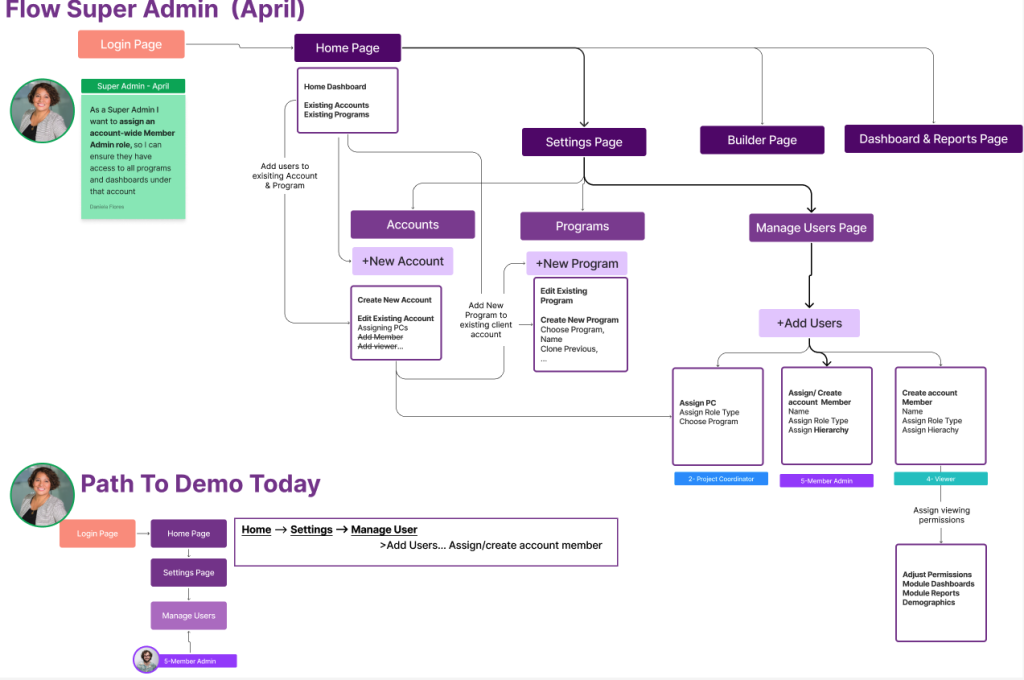
We also explored how users interacted with other users who were not set as a priority for MVP1.
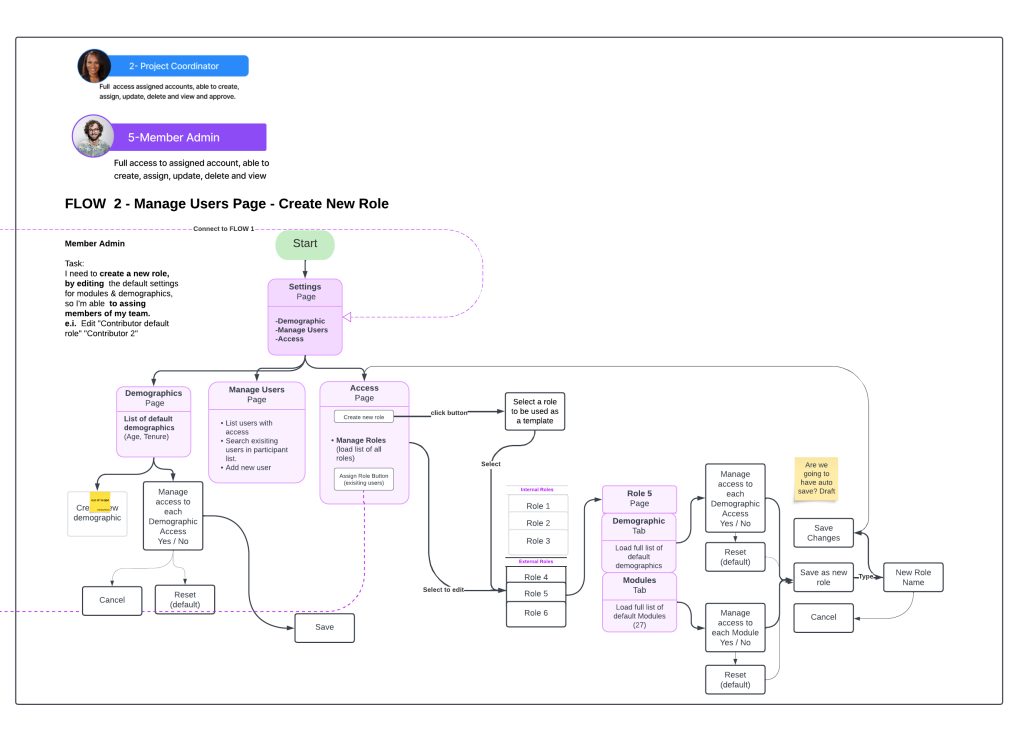

We progressed to more complex tasks, helping identify inefficiencies in the process and standardizing the experience.
PROTOTYPE
& Testing
Feedback is a gift!
Remote Testing
We gained key insights by testing interactive prototypes with staff lead coordinators, project coordinators, sales team and advisory partners. We gathered feedback and iterated on our designs based on the results.
Too much scrolling, the large list of demographics tracked for the program and survey levels impacted UI. How can we chunk the demographic settings?
Clients should not be able to remove demographics. Can we add a request feature?
The interface now features chunked demographics organized by criteria and access level, with “reveal subcategories on click” interactions added. Additionally, more descriptions and tooltips have been included. The walkthrough design guides users through the journey of role creation, setting demographics, and configuring modules.
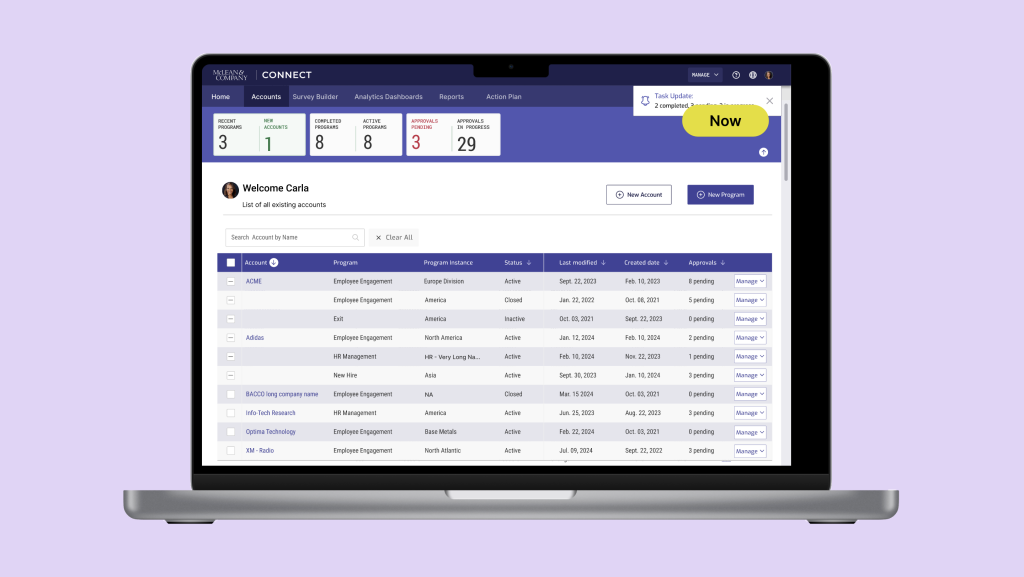
solution
The new workflow makes it easier to create different roles
and helps users (staff and clients) navigate the tricky bits of
managing complex permissions and demographics.
Granting access to peers and clients
Home Shortcut – Quick access to the “Manage Users” page.
Manage User Page – A one-stop shop for user creation and edits.
User Search – finding an existing user among hundreds of participant users.
Custom User Roles – Create new user roles specifically tailored to each client or program.
Role Type Tooltips – Clear descriptions for each role type.
Flexible Permissions – Adjust roles and permissions anytime.
Client Notifications – Clients are automatically notified of new access.

Project Manager
Primary Internal user (staff)
With clients taking charge of their teams and data, project coordinators can kiss those long management hours goodbye! This shift not only frees up their time but also empowers clients to handle their sensitive data independently and confidently. It’s a win-win!

External User (client)
Member Admin
Clients can collaborate openly with their teams and stakeholders while building surveys and developing analytics and action plans. They can delegate tasks to team members without worrying about data privacy, and they have the freedom to access and manage their data anytime, ensuring they stay in control!
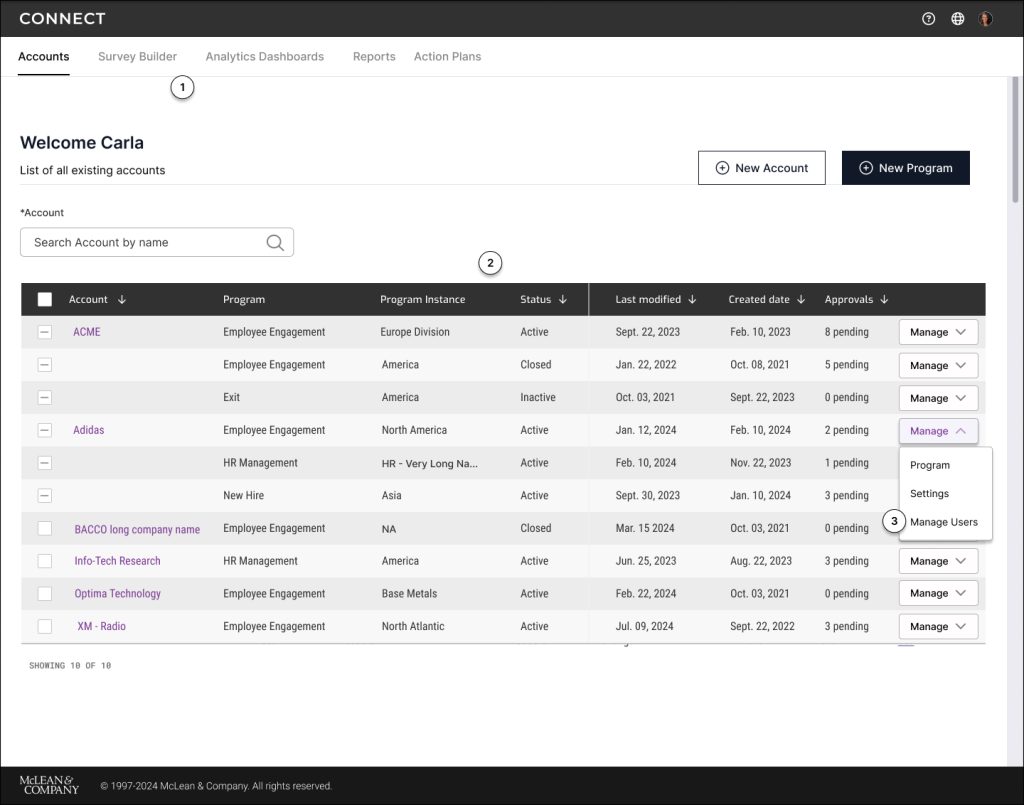
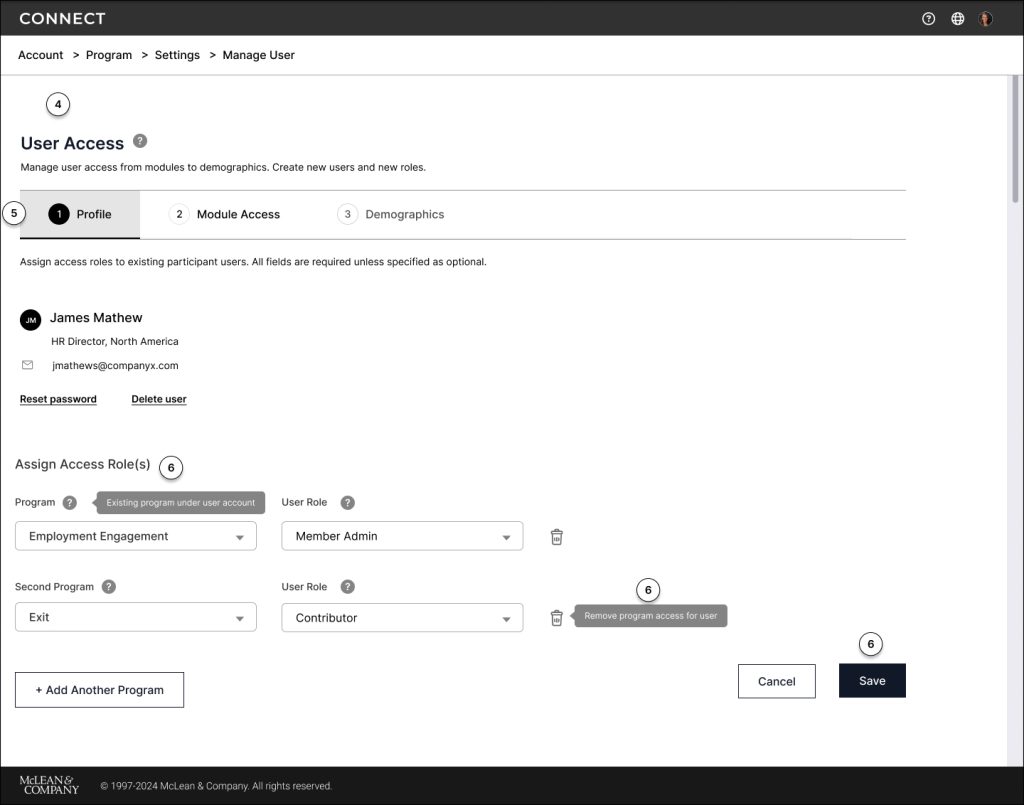
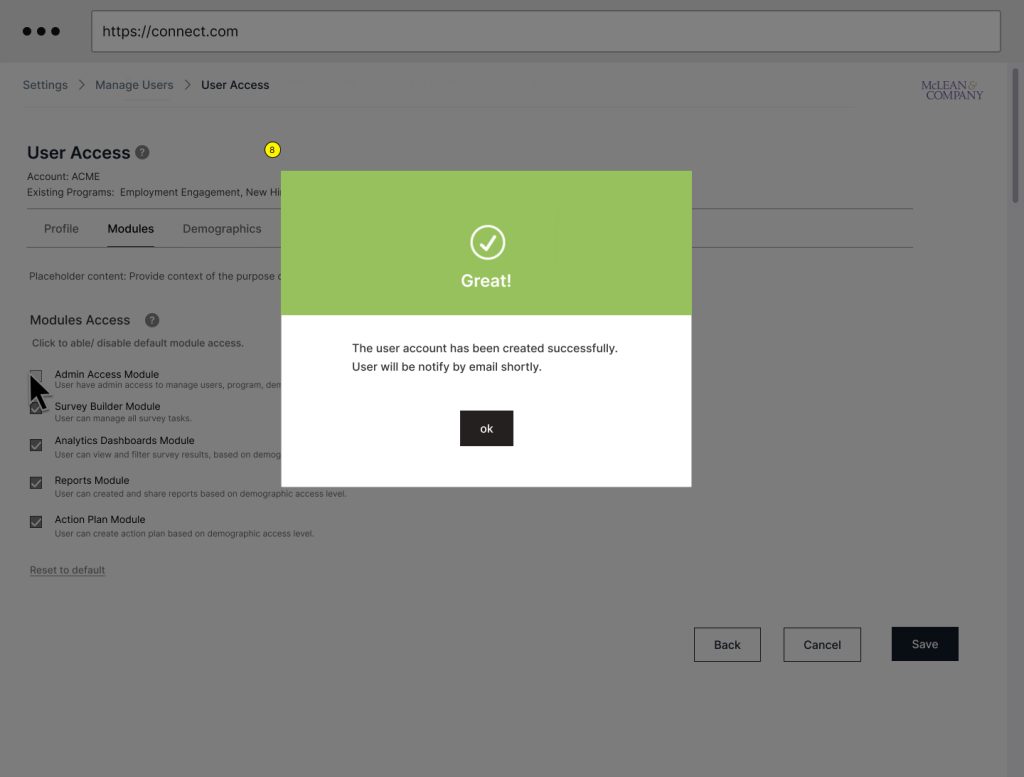
Managing their permissions was never this easy!
- Quick Navigation: With the new left navigation and breadcrumbs, users can easily find their account and program levels in no time.
- Centralized Access: No more hopping between different locations—now, granting access to staff and clients is streamlined in one interface.
- User-Friendly Tabs: Our tabbed interface guides new users through setting up modules and demographics, cutting down the cognitive load for busy coordinators.
- Helpful Tooltips: Complex info is now clarified with handy tooltips, making everything easier to understand.
- Clear Descriptions: We’ve added descriptions to minimize errors and confusion around modules and demographic settings.
- Flexible Permissions: Users can easily reset to default or edit permissions as needed.
- Error Reduction: Confirmation dialogues help prevent mistakes by asking for a final check before any changes are made.
- Customized Demographics: The interface has been improved for customizing complex demographic settings, making it more intuitive.

Primary Internal user (staff)
Project Manager
Consolidating the two levels of demographics into one interface instead of juggling multiple platforms is a huge win!
It saves us time and minimizes the chance for human errors, leading to a big reduction in project management. So we can spend more time guiding clients through their journey.

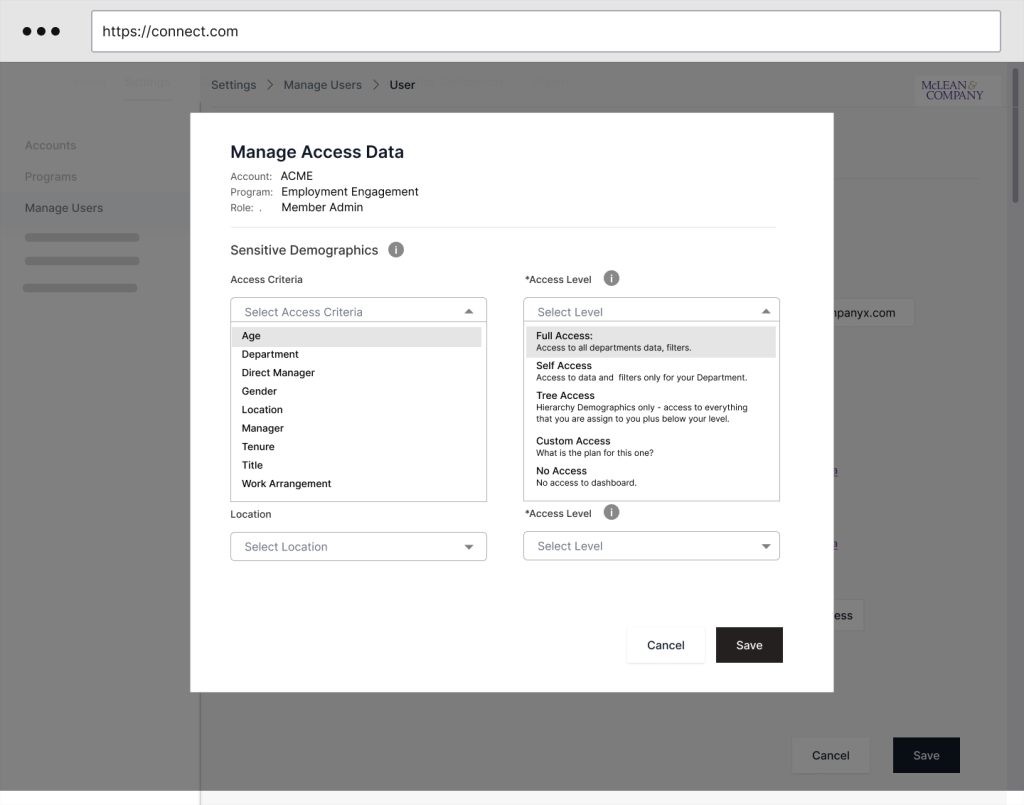
Clients now have the freedom to manage their team roles and permissions, as well as upload their participant lists—all of which cuts our workload from days to just a few hours! Talk about a game changer!”
April Ridsdale
Senior Director, HR Diagnostics Leadership
IMPACT
The redesign holds great promise! It will not only reduce dependency on Project Coordinators (PC) and simplify administrative tasks, but also ensure compliance while empowering clients to independently manage surveys and access actionable insights. By enhancing the client experience, we could boost client retention and attract larger accounts, making us even more competitive in the market!
Quality Impact:
Reduction
Management Time
Clients now have the autonomy to manage their team roles and permissions, leading to a significant reduction in project management time at every stage of the survey journey.
Decreased
Data Privacy Risk
Coordinators frequently had to impersonate users, which posed a privacy risk. By giving clients full autonomy, we have minimized this risk and improved compliance.
Quantity Impact:
33%
Reduction
Training time for new project coordinators (PC) is projected to decrease from 6 months to 2 months.
50%
Reduction
Time spent by PC setting up demographics across multiple platforms is projected to decrease from 8 hours to 4hrs
5 hrs.
Saving
Time spent by PC managing client participant data is expected to drop from 8 hours to 3 hours.
1 hr
Saving
Time spent by PC on copying and pasting translations for a single language is anticipated to decrease. With 11 translations, this could result in a total time savings of 11 hours.





